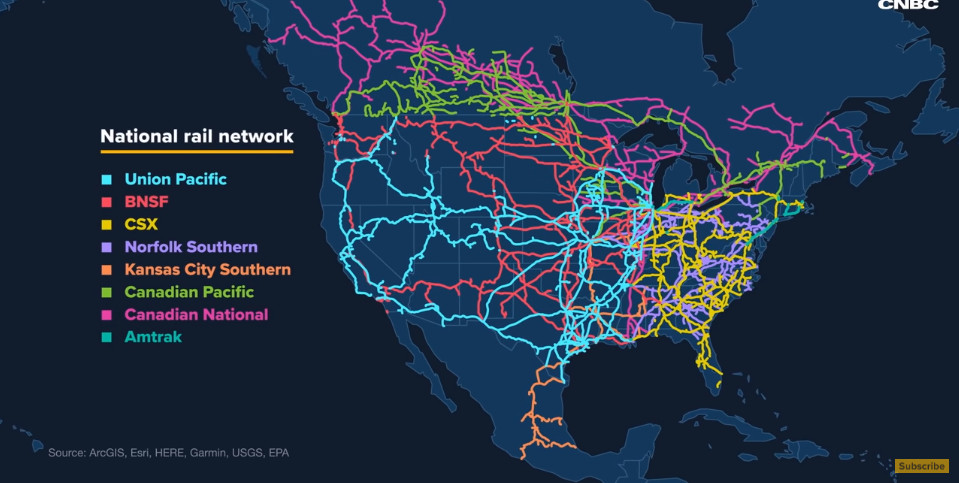
Date: 2024-04-23 Page is: DBtxt003.php txt00021648
TRANSPORT
US FREIGHT RAIL
Video: Why U.S. Freight Trains Are So Much Better Than Passenger Rail
US FREIGHT RAIL
Video: Why U.S. Freight Trains Are So Much Better Than Passenger Rail
Burgess COMMENTARY
The US freight rail network is impressive. There is a good balance between capital investment and improvement in productivity which has been sustained for many years. Several decades ago, the US railroad industry was in a complete shambles with many of the companies in bankruptcy. It took years to work out of this situation, but eventually a fairly sensible rationalization was accomplished.
Over time the technology deployed has been improved. There is not very much left in the modern US freight rail system that is labor intensive.
This is in contrast to the US passenger rail network that is very limited in every way. The North-East corridor (Boston - New York - Washington DC) is an important route but most of its rolling stock is several decades old and shows it!
Peter Burgess
292,402 views
Feb 2, 2022
CNBC ... 2.6M subscribers
The United States lags behind the rest of the world when it comes to passenger trains but when it comes to the freight railroad the U.S. is dominating. The U.S. freight rail network operates over 140,000 miles of privately-owned track in every state except Hawaii, according to the Association of American Railroads. It moves one-third of all U.S. exports and roughly 40% of long distance freight volume.
It competes directly with the trucking industry to move goods around the country. Shipping everything from coal to cars to chemicals. And with the rise of e-commerce companies like Amazon, trains are increasingly moving consumer goods as well.
There are seven major freight railroads that connect North America. Union Pacific and BNSF dominate the west. CSX and Norfolk Southern are the primary east coast operators, while Kansas City Southern, along with Canadian Pacific and Canadian National run routes north and south. Amtrak, which is the United State’s passenger service, owns only 3% of the country’s rail. In 2019, the five top railroads in the U.S. had a total operating revenue of more than $71 billion dollars.
But the freight rail industry’s success has not come without its challenges. The industry has dealt with bankruptcies, the lack of demand for coal and the more recent supply chain bottlenecks and rise in thefts. The seven top railroads, which own the majority of the tracks in North America, have also been criticized for power over the rail industry.
CNBC explores how freight railroads became so profitable and how the industry plans to evolve to stay on top.
Correction (February 3, 2022): At 1:41, Craig Fuller incorrectly states Amtrak is for-profit but Amtrak is not a for-profit corporation.

